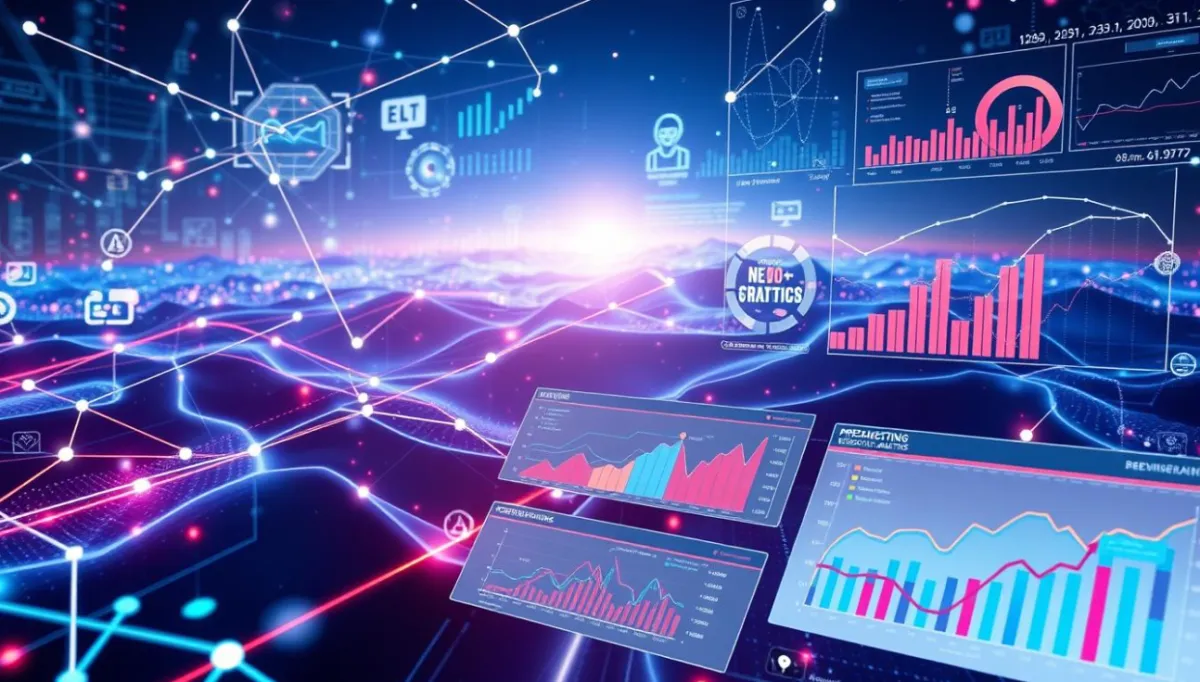
Unlock the Power of Predictive Analytics for Smarter Marketing
Unlock the Power of Predictive Analytics for Smarter Marketing
The era of predictive analytics has changed how businesses market. It uses data to make smarter marketing plans. This way, companies can talk to their customers in a way that feels right.
Predictive analytics uses math and computers to guess what customers will do. This helps brands talk to customers before they even ask. It makes marketing better and keeps customers coming back.
Tools like Google Analytics, HubSpot, and Tableau help businesses understand data. They can see what's happening now and what might happen next. This helps marketers plan better and use their resources wisely.
Big companies like Amazon and Netflix show how well predictive analytics works. They use data to make sure customers are happy and keep coming back. With the right tools, any business can use predictive analytics to make more money and meet customer needs better.

Key Takeaways
Predictive analytics changes marketing by using past data to guess what customers will do.
Data-driven marketing makes marketing more personal and targets the right people, leading to more engagement.
Tools like Google Analytics and HubSpot give important insights into what customers do, helping make better choices.
Testing different versions of campaigns through A/B testing helps make marketing messages better and get more sales.
Companies like Amazon and Netflix use predictive analytics to make customers happy and increase sales.
Understanding Predictive Analytics in Marketing
Predictive analytics is a big help for marketers. It helps them make their campaigns better by knowing what customers like. It looks at old data to find patterns that help make future plans.
This method is key for staying ahead. It helps guess what customers will want next. It also makes marketing more personal.
Definition and Importance
In marketing, predictive analytics uses old data and smart algorithms to guess what customers need. It uses special math and learning machines to find useful info in big data sets. This makes marketing better and helps make choices based on data.
A study by Forbes Insight found that 86% of companies did better after using predictive analytics. It shows how useful it can be.
Key Components of Predictive Analytics
To use predictive analytics well, you need a few important parts:
Data Collection: Getting the right data from different places is key.
Data Preparation: Making the data clean and ready for analysis is important.
Model Building: Creating smart algorithms to look at trends and results.
Deployment: Using these models in marketing to better connect with customers.
Using predictive analytics helps solve problems like bad data and privacy. Marketers must use it wisely. They should work together with others to use data science and analytics tools well.

These parts work together to help businesses. They make it easier to improve what they offer. They also make communication more personal for different customers.
Unlocking the Power of Predictive Analytics in Marketing Campaigns
Using predictive analytics in marketing helps a lot. It makes businesses better at keeping customers, making things personal, and using resources well. By using lots of data, companies can guess what customers will do next.
Benefits of Utilizing Predictive Analytics
Predictive analytics changes marketing for the better:
Improved Customer Retention: It can keep customers from leaving by up to 15%.
Enhanced Personalization: Making ads based on what customers like makes them more fun.
Optimized Pricing Strategies: Knowing market trends helps set prices that customers are okay with.
Better Resource Allocation: It helps use marketing money wisely, saving up to 10%.
Increased Revenue: Companies using it make 10% more money because their ads are better.
Real-World Examples of Success
Many companies have seen great results with predictive analytics.
Company Strategy Outcome Target Uses shopping patterns for personalized offers More customers and sales Uber Forecasts demand with traffic data Drivers match demand well Amazon Makes personalized recommendations Better customer experience and inventory
These examples show how predictive analytics can really help. It's great for making marketing better and improving overall strategy.

Conclusion
Predictive analytics in marketing is key for businesses to stay ahead. It turns data into useful insights. This helps companies make smarter marketing plans.
With predictive analytics, businesses can find new leads and make marketing personal. They can also make their campaigns better. This leads to better results and more money saved.
Using predictive analytics helps keep customers happy. It lets businesses talk to customers before they leave. This keeps customers coming back.
Predictive models get better with artificial intelligence and machine learning. They help make marketing more personal. This makes businesses more successful and opens up new chances in the market.
